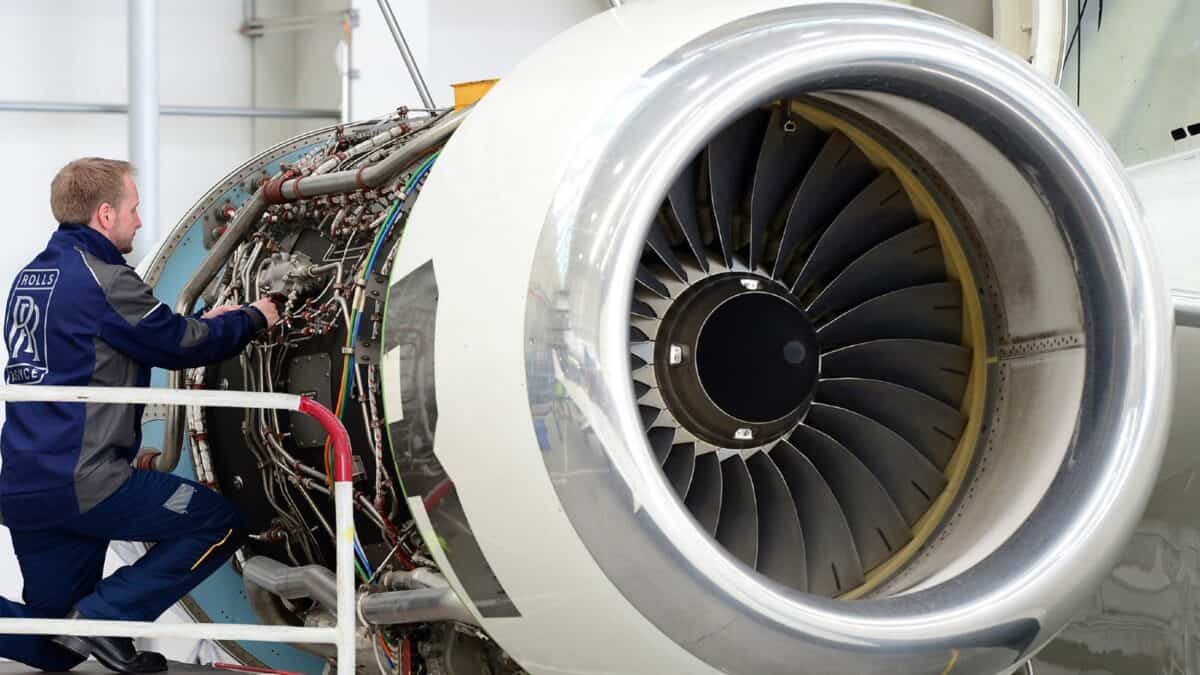Rolls-Royce’s (LSE: RR) share price lost ground after the 7 November release of a Q3 trading update.
There were two elements in this that prompted the drop, in my view. One was that the aerospace, defence and power systems giant maintained it full-year 2024 outlook rather than boosting it. The second was it highlighted that the aerospace industry supply chain remains challenged.
The aerospace industry will obviously continue to work on remedying these supply shortfalls. Given the collective financial and intellectual might of the sector, I cannot see this being a perpetual problem.
A more serious risk I see for Rolls-Royce is any further question marks over the reliability of its latest aircraft engines. On 2 September, there was an in-flight failure in a Cathay Pacific A350-1000 Rolls-Royce XWB-97 engine.
And on the first element behind the price drop, Rolls-Royce had already dramatically upgraded its 2024 guidance earlier this year.
Specifically, its H1 2024 results released on 1 August sa its underlying operating profit forecast raised to £2.1bn-£2.3bn from £1.7bn-£2bn earlier. And it increased its free cash flow forecast to £2.1bn-£2.2bn from the previous £1.7bn-£1.9bn.
The longer-term outlook
The upgraded guidance issued just three months ago was well-founded, in my view. Over the first six months of the year, Rolls-Royce saw year-on-year underlying operating profit jump 74% to £1.149bn. Free cash flow soared 225% to £1.158bn.
These numbers also prompted the firm to raise its guidance to 2027, which is also still in place. Specifically, this forecasts £2.5bn-£2.8bn in operating profit by then and £2.8bn-£3.1bn in free cash flow.
As also highlighted by the firm in its trading update, the major international credit ratings agencies are also positive for Rolls-Royce’s prospects. All three — Moody’s, Fitch, and Standard & Poor’s (S&P) rate it in the elite ‘investment grade’ bracket of firms.
In its 21 August ratings upgrade of the firm, S&P forecast adjusted earnings before interest, tax, depreciation, and amortisation margins at 18%-19% in 2024 and 2025. It also projected free operating cash flow of £2.1bn-£2.3bn in the same years.
These ratings dictate how much credit can be accessed by firms and at what cost. They also influence how willing financial institutions are to discuss future opportunities for growth.
Are the shares undervalued?
On the key price-to-earnings ratio stock valuation measure, Rolls-Royce trades at just 19.8. This compares to a 33.5 average for its competitors, so it is very cheap on this basis.
The same thing is true on the price-to-sales ratio (P/S). Here the firm is currently at 2.6 against a competitor average of 3.6.
To translate all this into share price terms, I used a discounted cash flow analysis using other analysts’ figures and my own.
This shows Rolls-Royce shares to be 51% undervalued at their present price of £5.46. So, a fair value for the stock is £11.14, although they may go lower or higher than that.
Will I buy the stock?
I already own another stock in the same sector (BAE Systems) so another would unbalance my portfolio.
However, if I did not have it I would buy Rolls-Royce shares today for their very strong growth prospects.







